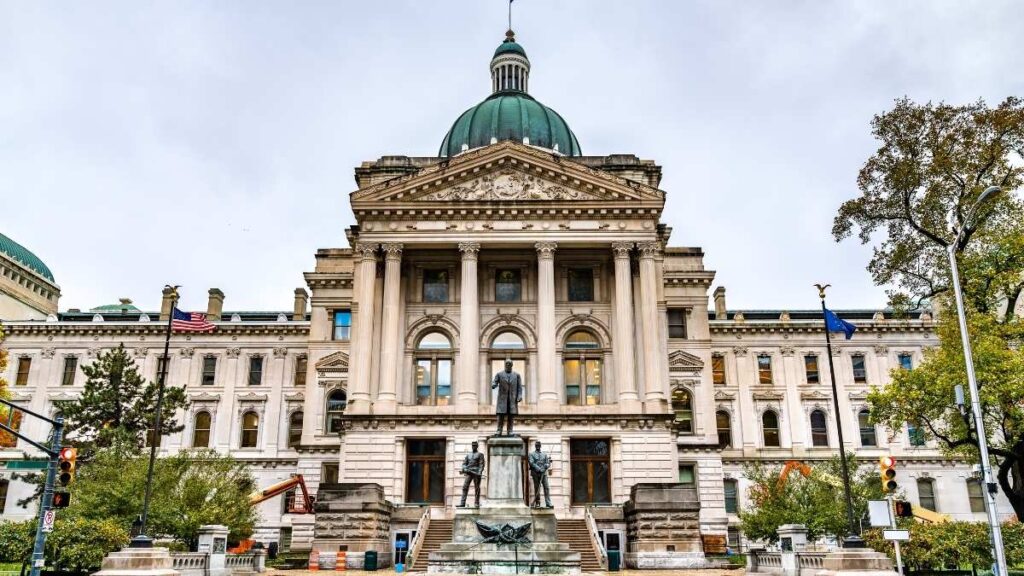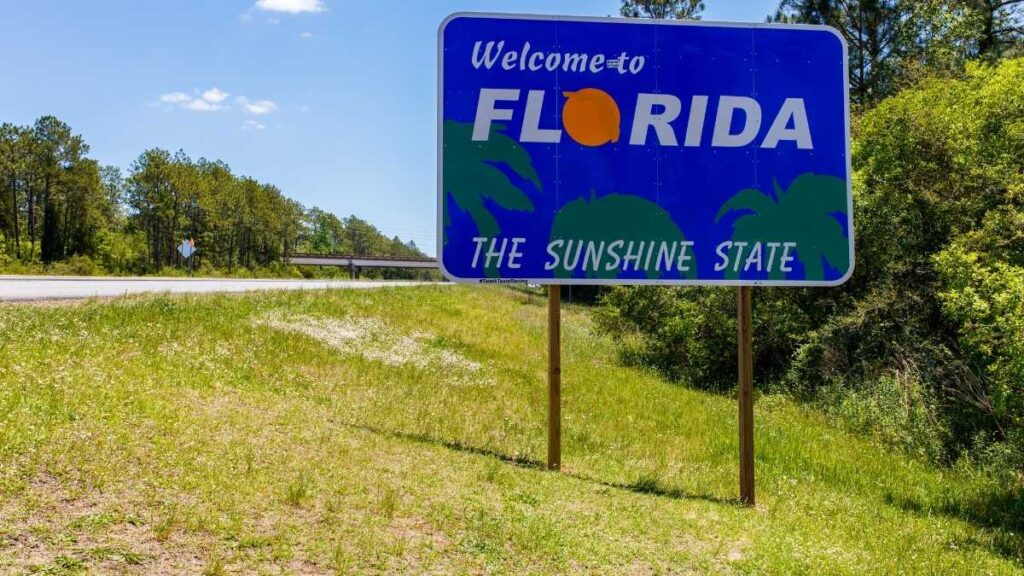The landscape of American public finance in 2025 is defined by a stark and widening paradox. At the state level, a narrative of fiscal stability and cautious optimism prevails.
Following years of unprecedented volatility, most state governments have entered a period of normalization, characterized by modest revenue growth, disciplined spending, and historically robust financial reserves.
Statehouses across the country, having built formidable fiscal cushions, are navigating the post-pandemic economy from a position of relative strength.
Part I: The Tale of Two Budgets: A National Overview

Executive Summary & Introduction
Yet, this story of stability at the state level runs parallel to a deepening crisis of fiscal distress in America’s cities, counties, and municipalities. The fiscal outlook for local governments is increasingly described as “challenging” and “grim,” with many confronting a widening chasm between stagnant or declining revenues and the soaring costs of providing essential services.
This report posits that this divergence is not a random occurrence but the predictable outcome of structural, political, and economic forces that have created a profound disconnect between the fiscal fortunes of state capitols and the realities on Main Street.
The withdrawal of extraordinary federal support that propped up all levels of government during the COVID-19 pandemic has exposed the underlying vulnerabilities of local finance. The resulting fiscal shock has not been absorbed evenly; it has cascaded down the chain of government, largely bypassing the well-fortified states and landing with full force upon the local entities least equipped to manage it.
Part II: The View from the Statehouse: An Era of Cautious Stability

The State Fiscal Condition in 2025
After the extreme fiscal fluctuations of the pandemic era—which saw record-breaking revenue growth in fiscal years 2021 and 2022 followed by a mild decline in 2023—state governments have settled into a “new normal” of cautious but stable financial health. This stability is built upon three pillars: revenue normalization, expenditure discipline, and unprecedented reserve levels.
First, state revenue streams have returned to a more predictable and sustainable trajectory. Aggregate state general fund revenue is projected to grow by a modest 1.9% in fiscal year 2025, marking a fourth consecutive year of moderate growth following the post-pandemic surge.
This trend indicates that state budget officials have successfully managed the transition away from reliance on temporary federal aid and volatile revenue windfalls. The situation is, in many cases, better than anticipated; as of mid-2025, 34 states reported that their revenue collections for the fiscal year were exceeding their original budget estimates, with another nine states reporting collections were on target.
Part III: The View from City Hall: A Gathering Storm of Fiscal Pressure
The 2025 Fiscal Pincer Movement
A gathering storm of fiscal pressure is squeezing America’s cities and counties. Click on each block to learn more about the crisis.
Expiring Federal Aid
The ARPA Cliff
- The ARPA/SLFRF “lifeline” funding, which cushioned pandemic shocks, is ending in 2025.
- This leaves local governments with a sudden and severe revenue hole.
- There is no replacement for this flexible federal aid in sight.
Squeezed Revenues
Constricted Income Streams
- Property tax income is threatened by a downturn in commercial real estate.
- Aid from states is unlikely to fill the federal gap.
- State-imposed tax limits (TELs) restrict the ability to raise local revenue.
Soaring Costs
Rising Expenditure Pressures
- 85% of counties report a surge in demand for services like public safety and housing.
- Costs are escalating due to inflation, healthcare, and rising employee wages.
- Workforce shortages are forcing higher spending to attract and retain staff.
The Structural Crisis
A Perilous Result
- Local governments face a permanent, higher cost structure with a pre-pandemic revenue base.
- This creates a structural deficit—a built-in gap between income and expenses.
- Leads to painful service cuts, deferred infrastructure maintenance, and tax hikes.
The Local Government Fiscal Condition in 2025
While states enjoy a period of stability, a storm of fiscal pressure is gathering over America’s cities and counties. The financial health of local governments is deteriorating rapidly due to a confluence of expiring aid, constricted revenues, and soaring costs. This is creating a structural crisis that threatens the delivery of essential public services.

The most immediate and acute challenge is the ARPA fiscal cliff. The State and Local Fiscal Recovery Fund (SLFRF) program, established under ARPA, was a “lifeline” that provided direct, flexible funding to municipalities, allowing them to cushion the economic and fiscal shocks of the pandemic. This federal aid enabled local governments to maintain services, avoid layoffs, and respond to urgent community needs.
However, that lifeline has been severed. As of 2025, the vast majority of these funds have been obligated or spent, and the program is ending. This leaves local governments facing a sudden and severe revenue hole with no replacement in sight.
Part IV: The Great Disconnect: Why State Fortunes Aren’t Reaching Main Street

The diverging paths of state and local finances are rooted in fundamental, structural differences in how they are funded, the responsibilities they bear, and the political dynamics that govern their relationship. Three key factors create the great disconnect between statehouse surpluses and city hall shortfalls: a chasm in revenue structures, the crushing weight of unfunded mandates, and a persistent intergovernmental squeeze.
The Revenue Structure Chasm
The primary driver of the fiscal divergence is the fundamentally different way state and local governments raise money.
State governments are primarily funded by broad-based taxes that are highly sensitive to overall economic activity. The largest sources of state revenue are typically individual income taxes and sales taxes. These revenue streams are elastic, meaning they rise and fall in close concert with the health of the economy. When wages grow, income tax collections increase; when consumer spending is strong, sales tax receipts follow suit. This structure has benefited states during the recent period of economic growth and wage gains.
The Unfunded Mandate Millstone
A second critical factor is the imposition of unfunded mandates, which function as a stealthy transfer of fiscal burden from higher levels of government to localities. An unfunded mandate is a law, regulation, or requirement imposed by a federal or state government on a local government without providing the necessary funding for its implementation. These mandates are not optional; they create enforceable duties that local governments must fulfill, often forcing them to make “difficult choices, requiring cuts to essential local services to comply with federal [or state] requirements”.
This is a long-standing issue in American federalism. Classic examples of federal mandates include the Clean Air Act, which requires localities to meet federal air quality standards, and the Americans with Disabilities Act (ADA), which mandates accessibility in public facilities—both imposing significant, ongoing compliance costs on local governments.
The Intergovernmental Squeeze
Finally, the policy choices made in state capitols often directly and negatively impact local finances. State aid and shared revenue are crucial funding sources for many municipalities and counties. When states prioritize their own fiscal goals—such as building up rainy day funds or enacting broad-based tax cuts—it can result in flat or reduced funding for localities, thereby exacerbating their budget shortfalls.
Furthermore, states can use their legislative power to actively restrict the fiscal autonomy of local governments through preemption. State laws that cap property tax growth or prohibit certain types of local taxes directly limit the ability of cities and counties to raise the revenue needed to fund local services and comply with state and federal mandates. This combination of reduced aid and restricted authority creates an intergovernmental squeeze that leaves local governments with more responsibilities but fewer resources.
Unfunded mandates operate as a form of “hidden tax” levied by higher levels of government on local taxpayers, creating a severe accountability gap in the process.
Part V: On the Ground: Three State Case Studies
To illustrate these national trends, this section examines the fiscal dynamics in three of the nation’s largest and most influential states: California, Texas, and Florida. By comparing the state-level budget situation with that of a major local government within each state, the mechanisms of the great disconnect become starkly clear.
State vs. Local Budgets: A Tale of Three States
California: The Compounding Crisis
State Level Woes
- Budget Shortfall: Facing a deficit of $11.8B – $12B due to lower tax revenue and higher Medi-Cal costs.
- State Solution: Using $7.1B from reserves, cutting programs, and shifting funds.
Local Level Pain (Los Angeles)
- Austerity Measures: County budget includes 3% cuts for most departments.
- Impact: Eliminating 310 vacant positions and cutting supplies.
- Analysis: The state’s own fiscal problems mean it cannot provide aid to its financially stressed local governments.
Texas: The Great Disconnect
State Level Wealth
- Massive Surplus: State has a $23.76B surplus plus $23.4B in its rainy day fund.
- State Action: Using the surplus to fund a record $32.2B property tax relief package.
Local Level Strain (Harris County)
- Budget Deficit: Despite state wealth, the county faces a deficit.
- Local Measures: Implemented a year-long hiring freeze and required departments to find 10% in cost savings.
- Analysis: The state claims credit for tax cuts while local governments must cut services to pay for rising state-mandated costs (jails, courts).
Florida: The Looming Horizon
State Level Uncertainty
- Current Surplus, Future Deficit: A $2.1B surplus now is projected to become a $6.9B deficit by 2027-28.
- State Policy: Imposed new, unfunded mandates on local governments, such as funding a new Sheriff’s office.
Local Level Crisis (Miami-Dade)
- Funding Gap: Started its budget process with a staggering $400M shortfall.
- Painful Choices: Forced to eliminate lifeguards, close the Office of New Americans, and increase fees for water and trash.
- Analysis: State mandates directly caused the local budget crisis, forcing cuts to popular programs to pay for new state requirements.
Case Study 1: California – The Compounding Crisis
In California, the fiscal stress at the state level is compounding the crisis faced by its local governments, creating a downward spiral of austerity.
- State Level: After several years of historic surpluses, California is confronting a significant budget shortfall. For the 2025-26 fiscal year, the state faces a deficit estimated to be between $11.8 billion and $12 billion.
- Local Level (Los Angeles County): The state’s fiscal woes mean there is no relief coming for its largest county. Los Angeles County is grappling with its own “extraordinary budget pressures,” forcing the Board of Supervisors to approve a $47.9 billion budget that includes 3% cuts for most county departments.
- Analysis: California exemplifies a compounding crisis. Unlike in other states where state surpluses coexist with local deficits, here the state’s own budget problems mean it is unable to provide any additional support to its financially stressed local governments.
Case Study 2: Texas – The Great Disconnect

Texas provides the quintessential example of the report’s central thesis: a state flush with cash while its major urban centers face fiscal distress.
- State Level: Texas is in a period of extraordinary fiscal strength. The state comptroller projects a budget surplus of $23.76 billion carried over from the 2024-25 biennium, which is in addition to a balance of $23.4 billion in its Economic Stabilization Fund (ESF), or rainy day fund.
- Local Level (Harris County): Despite the state’s immense wealth, Harris County, which includes the city of Houston, is facing a budget deficit. To balance its $2.76 billion budget without raising the property tax rate, the county was forced to implement a yearlong hiring freeze and direct department heads to identify 10% in potential cost savings.
- Analysis: The situation in Texas starkly illustrates the great disconnect. The state’s enormous surplus is not translating into fiscal health for its largest and most economically vital county.
Case Study 3: Florida – The Looming Horizon

Florida’s fiscal story demonstrates how future state-level uncertainty and current state policy decisions can create immediate and acute pain for local governments.
- State Level: Florida’s immediate fiscal picture is stable, with a projected surplus of $2.1 billion for fiscal year 2025-26 and total reserves of $15.7 billion. However, this stability is projected to be short-lived.
- Analysis: Florida highlights the direct impact of state mandates on local finances. The state’s decision to require counties to fund new, independent constitutional offices imposed hundreds of millions of dollars in new, unfunded costs directly onto Miami-Dade taxpayers.
- Local Level (Miami-Dade County): Miami-Dade County began its 2025 budget process facing a staggering $400 million funding gap. The shortfall was driven by a combination of the end of federal pandemic funding, state-level cuts to local programs, and, most significantly, new costs imposed by a state mandate that required the county to fund a newly independent Sheriff’s office and other constitutional offices. water and trash services, and drawing down reserve funds.
This comparative analysis reveals the distinct ways in which the state-local fiscal disconnect manifests. In California, it is a shared crisis. In Texas, it is a story of two entirely different worlds. And in Florida, it is a clear case of state policy directly imposing fiscal hardship on its largest county. In every case, however, the outcome is the same: increased pressure on the local governments responsible for delivering the services that most directly impact citizens’ daily lives.
Part VI: The Bottom Line: Tracing the Impact on Services and Taxpayers
California
State Surplus/Deficit: $(11.8)B
State Action: Reductions, Reserve Drawdown
Major County: Los Angeles County
County Surplus/Deficit: Deficit
County Action: 3% Dept. Cuts, Hiring Freeze
Texas
State Surplus/Deficit: $23.76B
State Action: Property Tax Relief, New Spending
Major County: Harris County
County Surplus/Deficit: Deficit
County Action: Hiring Freeze, 10% Savings Directive
Florida
State Surplus/Deficit: $2.1B
State Action: Teacher Pay, Tax Relief
Major County: Miami-Dade County
County Surplus/Deficit: $(400)M
County Action: Service Cuts, Fee Increases, Reserve Use
The abstract numbers and percentages that define state and local budgets translate into tangible impacts on the daily lives of citizens. The fiscal pressure building on local governments is not merely an accounting problem; it results in diminished public services, a confusing and often contradictory experience for taxpayers, and increased precarity for the public sector workforce.
Where the Money Goes (and Where It Doesn’t)

The consequences of local budget shortfalls are most visible in the reduction of non-mandated, “quality-of-life” services. As local governments are legally required to fund core responsibilities like public safety and to comply with state and federal mandates, discretionary spending is often the first to be cut. The case studies provide clear examples of this dynamic in action:
- Public Amenities and Cultural Services: In Miami-Dade County, the budget crisis led to the elimination of lifeguards at certain public swimming holes and the closure of the Office of New Americans, a resource for the immigrant community.
- Social Safety Net: Miami-Dade’s budget shortfall resulted in a 50% cut to the county’s Eviction Diversion Project, a program that provides essential legal assistance to residents at risk of homelessness.
- Infrastructure and Core Operations: In Los Angeles County, the budget was balanced by deferring equipment purchases and reducing the scope of some county programs.
The Taxpayer Paradox

For the average citizen, the diverging fiscal paths of their state and local governments can create a confusing and paradoxical experience.
A taxpayer’s total burden is a combination of federal, state, and local taxes, fees, and charges. The current environment can lead to situations where a highly visible tax cut from one level of government is quietly offset by a cost increase from another.
The Public Sector Workforce
The fiscal strain on local governments also has a direct impact on the public sector workforce. To balance their budgets, local officials are increasingly turning to personnel-related savings. This includes implementing hiring freezes, as seen in Harris County, which prevents the county from filling critical vacancies.
A more common strategy is the elimination of already vacant positions, as Los Angeles County did to save money without resorting to layoffs. In more extreme cases, such as in the City of Los Angeles, budget deficits have led to proposals for thousands of layoffs across nearly every city department. These actions not only impact the livelihoods of public servants but also diminish the capacity of local government to deliver services effectively.
Part VII: Conclusion: Bridging the Gap and Empowering Fiscal Futures
Summary of Findings
The analysis presented in this report leads to a clear and urgent conclusion: the divergence between the fiscal health of state governments and the growing distress of local governments in 2025 is not a temporary anomaly but a deep-seated structural problem within American public finance.
This dangerous gap is the result of a confluence of powerful forces. The cessation of extraordinary federal pandemic aid has exposed the underlying weaknesses of a system where fiscal shocks are not absorbed equitably but are instead passed down to the level of government least equipped to handle them.
Policy Recommendations & Forward Outlook
Addressing this structural imbalance requires a deliberate rethinking of the fiscal relationship between federal, state, and local governments. The challenges are significant, but they are not insurmountable. A forward-looking policy agenda should focus on three key areas:
- Reforming the State-Local Fiscal Relationship: The current model is failing. States should move toward modernizing their shared revenue formulas to ensure that local governments have a stable and predictable funding stream that grows with the state’s economy.
- Addressing the Mandate Problem: The Unfunded Mandates Reform Act of 1995 has proven insufficient. Congress should consider strengthening the act by narrowing its exemptions and adding a mechanism that requires an up-or-down vote on funding any mandate whose costs exceed the statutory threshold.
- Empowering Local Governments: In an era of fiscal constraint from above, local governments must be empowered to better control their own financial destiny. States should reform laws that severely restrict local fiscal autonomy, such as inflexible property tax caps and prohibitions on diversifying local revenue sources.
A Call to Action for Citizens
While the fiscal challenges facing local governments are complex, the most powerful force for ensuring transparent, effective, and equitable public finance is an informed and engaged citizenry. Citizens can take several concrete steps to become more involved:
- Attend Public Meetings: Local governments are required to hold public hearings on their proposed budgets. Attending these meetings, which are typically advertised on the city or county website and in local newspapers, is the most direct way to hear the debate and voice an opinion.
- Review the Budget: By law, proposed budgets must be made available to the public. Many municipalities now also produce “user-friendly budgets” or “citizen’s guides” designed to explain complex financial information in a clear and accessible format. Requesting and reading these documents is a critical first step.
- Provide Input: Citizens have the right to provide testimony at public hearings, submit written comments to the budget committee or elected officials, and contact their local representatives directly to share their priorities and concerns.
- Join a Committee: Some local governments have citizen budget advisory committees that provide formal input during the budget development process. Volunteering for such a committee is an opportunity for deep engagement.
- Understand the Process: Familiarize yourself with the local budget timeline, which typically begins months before the fiscal year starts with departmental requests and culminates in public hearings and a final vote by the governing body.
The fiscal pressures on local governments in 2025 are immense, and the choices they face are difficult. However, these challenges also present an opportunity for a renewed focus on local governance. By bridging the gap in understanding and engagement, informed citizens can hold all levels of government accountable and become active partners in building fiscally resilient communities where tax dollars are allocated effectively to serve the public good.

